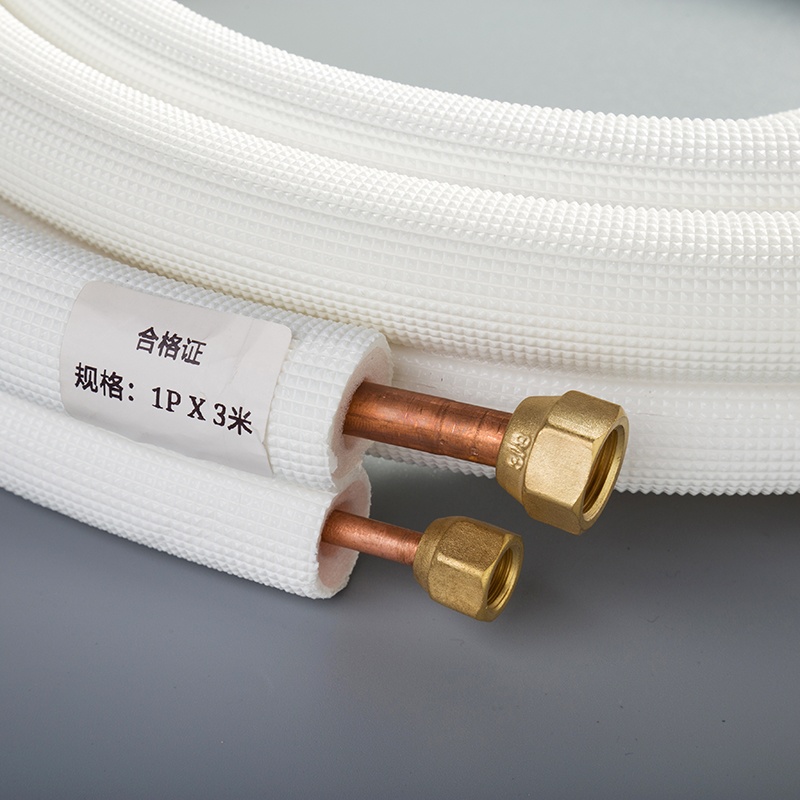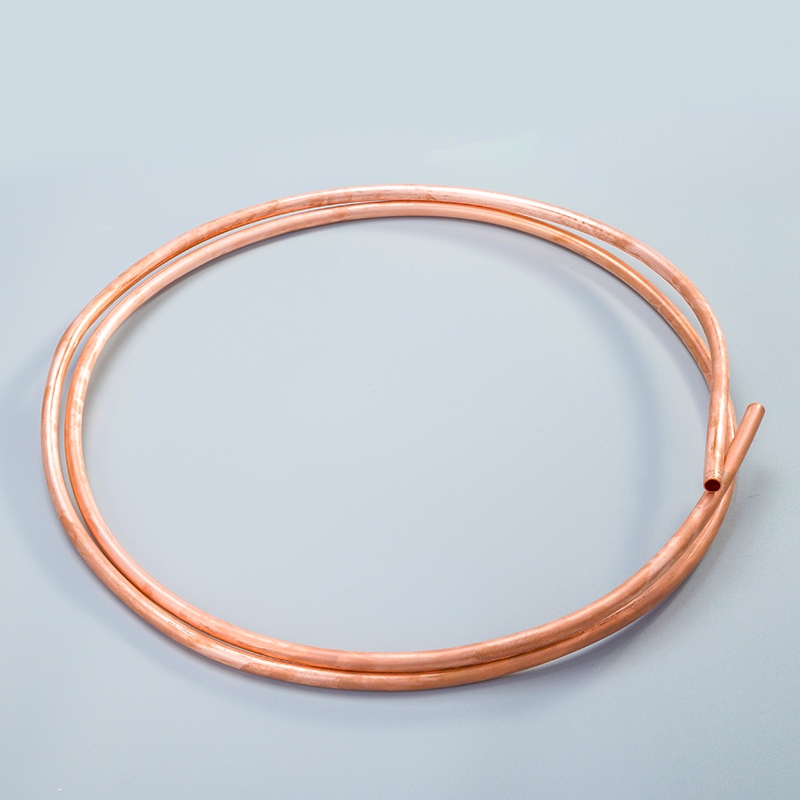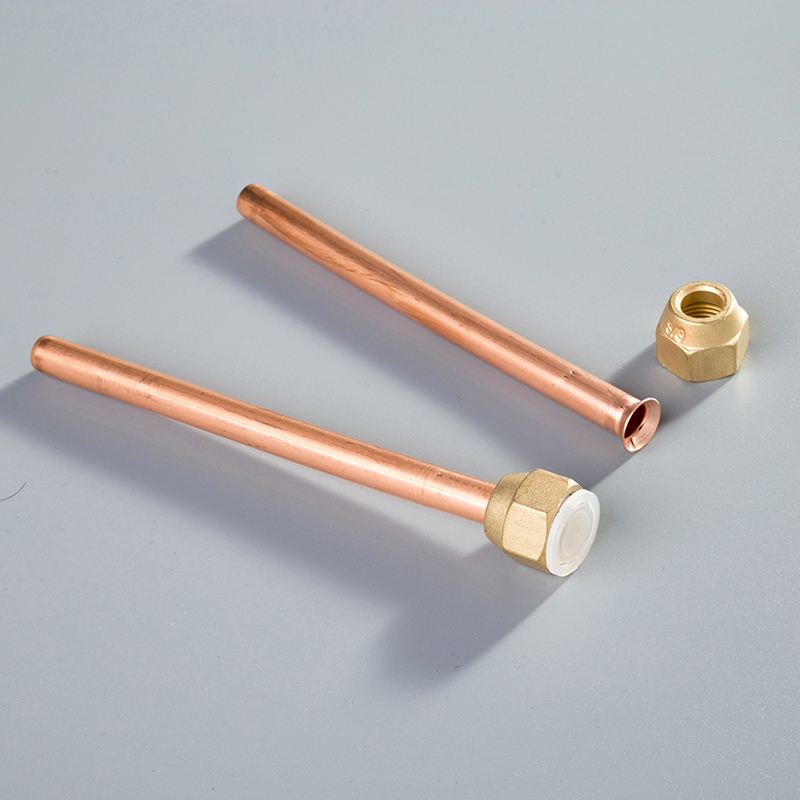Choosing the Best Copper Pipe for AC Systems

Selecting the appropriate types of copper pipe for air conditioner systems is essential for optimal performance. Copper pipes are integral to the efficient operation of your AC, thanks to their superior heat conductivity compared to materials like plastic or PVC. This efficiency not only helps lower energy costs but also maintains a consistent temperature in your home. Copper pipes are energy-efficient, requiring less energy for heat transfer and minimal maintenance. When determining what type of copper pipe is used for air conditioning, it's important to familiarize yourself with the various types of copper pipe for air conditioner systems to make a well-informed choice.
Types of Copper Pipes for Air Conditioner

When it comes to choosing the right copper pipes for your air conditioning system, understanding the different types is crucial. Each type has its own characteristics and applications, which can significantly impact the performance and efficiency of your AC system.
Type K Copper Pipe
Characteristics of Type K
Type K copper pipes are known for their thick walls, making them the most durable among the common types. This durability allows them to withstand high pressures, which is why they're often used in HVAC systems. You can find Type K pipes in both rigid and flexible forms, offering versatility depending on your installation needs.
Applications of Type K in AC Systems
In air conditioning systems, Type K pipes are ideal for high-pressure applications. Their robust nature makes them suitable for both residential and commercial settings where reliability is a priority. If you're dealing with an environment that demands high durability, Type K is a solid choice.
Type L Copper Pipe
Characteristics of Type L
Type L copper pipes are marked with a blue color and are the most commonly used type for various applications. They strike a balance between cost and durability, making them a popular choice for residential installations. Available in both flexible rolls and rigid tubing, Type L pipes offer flexibility for different installation scenarios.
Applications of Type L in AC Systems
For air conditioning systems, Type L pipes are often used in residential settings. They provide a good balance of strength and cost-effectiveness, making them suitable for interior water supply systems and hot water heating. If you're looking for a reliable option for your home AC system, Type L might be the way to go.
Type M Copper Pipe
Characteristics of Type M
Type M copper pipes have thinner walls compared to Type K and Type L. While they are less durable, they are more affordable, which makes them a viable option for certain applications. Type M is only available as rigid piping, which limits its flexibility in installation.
Applications of Type M in AC Systems
In air conditioning systems, Type M pipes are less common but can still be found in some HVAC units. They are typically used in residential water supply pipes due to their cost-effectiveness. If budget constraints are a concern, Type M might be considered, though it's important to weigh this against the need for durability.
ACR Copper Pipe
When you're exploring the types of copper pipe for air conditioner systems, ACR Copper Pipe stands out as a specialized option. This type is specifically designed for refrigeration and air conditioning applications, making it a top choice for many commercial projects.
Characteristics of ACR
ACR Copper Pipes are known for their hard-drawn, rigid nature. They typically come in 20-foot lengths, which makes them ideal for large-scale installations. The rigidity of ACR pipes ensures that they maintain their shape and integrity over long distances, which is crucial in commercial settings. These pipes are also marked with both 'ACR' and 'Type L', indicating their suitability for refrigeration tasks. You’ll appreciate their ability to handle the demands of chill water piping, thanks to their robust construction.
Applications of ACR in AC Systems
In air conditioning systems, ACR pipes are primarily used in commercial jobs. Their design caters to refrigeration needs, making them perfect for chill water piping. If you're working on a large-scale project, ACR pipes offer the durability and reliability you need. They ensure efficient heat transfer, which is essential for maintaining the performance of your AC system. When considering what type of copper pipe is used for air conditioning, especially in commercial environments, ACR pipes should be at the top of your list.
Comparison of Copper Pipe Types
Choosing the right copper pipe for your air conditioning system involves understanding the differences in durability, cost, and suitability for specific needs. Let's dive into these aspects to help you make an informed decision.
Durability
Durability of Type K vs. Type L
When it comes to durability, Type K copper pipes stand out due to their thick walls. This makes them highly resistant to high pressures, which is why they're often used in demanding HVAC systems. If you're looking for a pipe that can handle tough conditions, Type K is a reliable choice.
On the other hand, Type L copper pipes offer a balance between durability and cost. They have slightly thinner walls than Type K but are still robust enough for most residential applications. If you need a durable pipe for home use without breaking the bank, Type L might be the way to go.
Durability of Type M vs. ACR
Type M copper pipes have the thinnest walls among the common types, which makes them less durable. They're more suited for applications where cost is a bigger concern than longevity. If you're on a tight budget, Type M could be considered, but keep in mind its limitations in durability.
In contrast, ACR copper pipes are designed specifically for refrigeration and air conditioning. Their hard-drawn, rigid nature ensures they maintain integrity over long distances, making them ideal for commercial projects. If you're working on a large-scale installation, ACR pipes provide the durability needed to withstand internal pressures and ensure efficient heat transfer.
Cost
Cost comparison of Type K, L, M, and ACR
Cost is a crucial factor when selecting copper pipes. Type K pipes, with their superior durability, tend to be the most expensive. Type L pipes offer a middle ground, providing good durability at a more affordable price. Type M pipes are the least expensive, making them attractive for budget-conscious projects. However, their lower durability might not suit all applications. ACR pipes, while specialized, can also be costly due to their specific design for refrigeration and commercial use.
Suitability for AC System Requirements
Residential vs. Commercial Needs
For residential air conditioning systems, Type L pipes are often the best choice. They provide a good balance of cost and durability, making them suitable for most home installations. If you're dealing with a commercial project, ACR pipes are typically preferred. Their design caters to the demands of commercial refrigeration and air conditioning, ensuring reliable performance.
Specific AC System Requirements
When considering what type of copper pipe is used for air conditioning, it's essential to match the pipe type to your system's specific requirements. For high-pressure systems, Type K pipes are ideal. For standard residential systems, Type L pipes work well. If you're focused on cost, Type M might be an option, but be aware of its limitations. For commercial refrigeration, ACR pipes are the go-to choice due to their ability to handle refrigerant mediums and maintain efficiency over long runs.
Installation Considerations

When installing copper pipes for your air conditioning system, you need to consider several factors to ensure optimal performance and longevity. Let's explore the benefits of using soft copper and the importance of brazed joints in your AC system.
Benefits of Using Soft Copper
Soft copper pipes offer distinct advantages that can make your installation process smoother and more efficient.
Flexibility of Soft Copper
Soft copper pipes are incredibly flexible, which makes them a popular choice for connecting indoor and outdoor units in air conditioning setups. This flexibility allows you to navigate around obstacles and fit pipes into tight spaces without the need for additional fittings. By reducing the number of joints, you minimize potential leak points, ensuring a more reliable system.
Ease of Installation
The ease of installation with soft copper cannot be overstated. You can bend these pipes by hand or with simple tools, which speeds up the installation process. This ease of handling not only saves time but also reduces labor costs. If you're looking for a hassle-free installation, soft copper is an excellent choice.
Importance of Brazed Joints
Brazed joints play a crucial role in maintaining the integrity and efficiency of your air conditioning system.
Leak Prevention
Brazing creates strong, leak-proof joints that are essential for the high-pressure environments typical in AC systems. Unlike soldered joints, brazed connections withstand higher temperatures and pressures, providing a more secure seal. This reliability is vital for preventing refrigerant leaks, which can compromise system performance and increase energy costs.
Long-term Reliability
The long-term reliability of brazed joints ensures that your AC system remains efficient over time. These joints resist corrosion and mechanical stress, which means fewer repairs and maintenance issues down the line. By investing in brazed joints, you enhance the durability and lifespan of your air conditioning system, giving you peace of mind.
In conclusion, when considering what type of copper pipe is used for air conditioning, it's important to weigh the benefits of soft copper and the necessity of brazed joints. These elements contribute significantly to the overall efficiency and reliability of your AC system.
Choosing the right copper pipe for your AC system is crucial for efficiency and longevity. Here's a quick recap:
Type K pipes offer unmatched durability, perfect for high-pressure needs.
Type L pipes balance cost and strength, ideal for residential setups.
Type M pipes are budget-friendly but less durable.
ACR pipes excel in commercial refrigeration.
For residential systems, go with Type L for reliability. In commercial settings, ACR pipes are your best bet. Always consider your specific needs and make informed decisions. Remember, the right choice ensures your AC system runs smoothly and efficiently.
See Also
Benefits of Opting for Copper Tubing in Air Conditioning
The Importance of Copper Piping for Effective Air Conditioning
Exploring the Wonders of Copper Tubing in Air Conditioning
Revealing the Advantages of Copper Tubing in Air Conditioning


